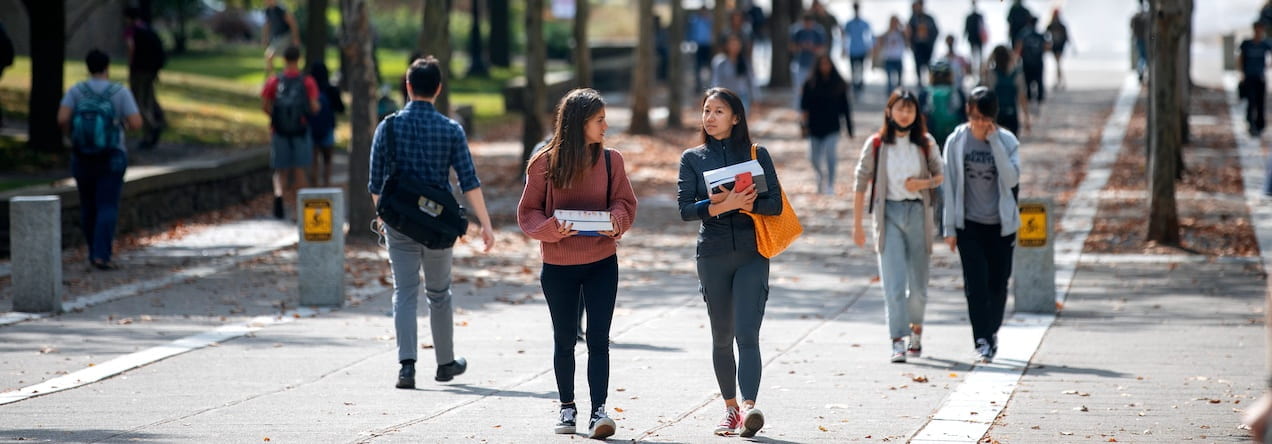Maha Haji
Assistant Professor
Sibley School of Mechanical and Aerospace Engineering
Biography
Dr. Maha Haji is an Assistant Professor of Mechanical and Systems Engineering. She is currently an MAE Faculty Fellow at Cornell and a Postdoctoral Associate in the Engineering Systems Laboratory in the Department of Aeronautics and Astronautics at MIT. Dr. Haji received her Ph.D. Mechanical and Oceanographic Engineering in 2017 from the Joint Program between MIT and Woods Hole Oceanographic Institution where she focused on the design and prototyping of a symbiotic system to harvest uranium from seawater. Dr. Haji has worked in industry as an engineering consultant at ATA Engineering, use analysis-driven design to solve problems ranging from aircraft and rockets to robotics and rollercoasters. Her current research focuses on utilizing multidisciplinary design optimization to develop a floating platform to provide recharging and data offloading capacity for autonomous underwater vehicles. At Cornell, her lab will develop designs for offshore systems to sustainably extract resources from the ocean such as power, water, and food, as well as mineral resources key to the progress of clean energy.
Research Interests
Design, Systems Engineering, Design Optimization, Renewable Energy, Aquaculture, Mineral Extraction, Desalination, Wave Energy, Offshore Wind, Offshore Structures, Ocean Engineering
- Energy Systems
- Energy, Mineral and Water Resources
- Wind Energy
- Environmental and Water Resources Systems Engineering
- Infrastructure Systems
- Ocean Sciences
- Optimization
- Sustainable Energy Systems
- Water Systems
Selected Publications
- M. N. Haji, S. J. Saidi, and A. H. Slocum, “Evolving from a hydrocarbon to a sustainable economy: starting with a case study for Iran,” Renewable and Sustainable Energy Reviews (in review).
- M. N. Haji, J. Tran, J. Norheim, and O. L. de Weck “Design and Testing of AUV Docking Modules for a Renewably Powered Offshore AUV Servicing Platform,” 39th International Conference on Ocean, Offshore & Arctic Engineering 2020, Virtual, August 3-7, 2020. https://doi.org/10.1115/OMAE2020-18982
- M. N. Haji, and A. H. Slocum, “An offshore solution to cobalt shortages via adsorption-based harvesting from seawater,” Renewable & Sustainable Energy Reviews, 105, 301-309, 2019. https://doi.org/10.1016/j.rser.2019.01.058
- M. N. Haji, J. Drysdale, K. Buesseler, and A. H. Slocum, “Results of an Ocean Trial of the Symbiotic Machine for Ocean uRanium Extraction,” Environmental Science & Technology, 53 (4), 2229-2237, 2019. https://doi.org/10.1021/acs.est.8b05100
- M. N. Haji, J. Gonzalez, J. Drysdale, K. Buesseler, and A. H. Slocum, “Effects of Protective Shell Enclosures on Uranium Adsorbing Polymers” Industrial & Engineering Chemistry Research, 57 (45), 15534–15541, 2018. https://doi.org/10.1021/acs.iecr.8b03583
- M. N. Haji, J. M. Kluger, T. P. Sapsis, and A. H. Slocum, “A Symbiotic Approach to the Design of Offshore Wind Turbines with Other Energy Harvesting Systems,” Ocean Engineering, 169, 673-681, 2018. https://doi.org/10.1016/j.oceaneng.2018.07.026
- M. E. Flicker Byers, M. N. Haji, A. H. Slocum, and E. Schneider, “Cost Optimization of a Symbiotic System to Harvest Uranium from Seawater via an Offshore Wind Turbine,” Ocean Engineering, 169, 227-241, 2018. https://doi.org/10.1016/j.oceaneng.2018.09.002
- M. N. Haji, J. M. Kluger, J. W. Carrus, T. P. Sapsis, and A. H. Slocum, “Experimental Investigation of Hydrodynamic Response of a Symbiotic Machine for Ocean Uranium Extraction combined with a Floating Wind Turbine,” International Journal of Offshore and Polar Engineering, 28(3), 225-231, 2018. https://doi.org/10.17736/ijope.2018.jc735
- A. H. Slocum, M. N. Haji, A. Z. Trimble, M. Ferrera, and S. J. Ghaemsaidi, “Integrated Pumped Hydro Reverse Osmosis Systems,” Sustainable Energy Technologies and Assessments, 18, 80-99, 2016. https://doi.org/10.1016/j.seta.2016.09.003
Education
B.S. (Mechanical Engineering), University of California, Berkeley, 2012
B.A. (Applied Math), University of California, Berkeley, 2012
M.S. (Oceanographic Engineering), Massachusetts Institute of Technology and Woods Hole Oceanographic Institution, 2015
Ph.D. (Mechanical and Oceanographic Engineering), Massachusetts Institute of Technology and Woods Hole Oceanographic Institution, 2017



